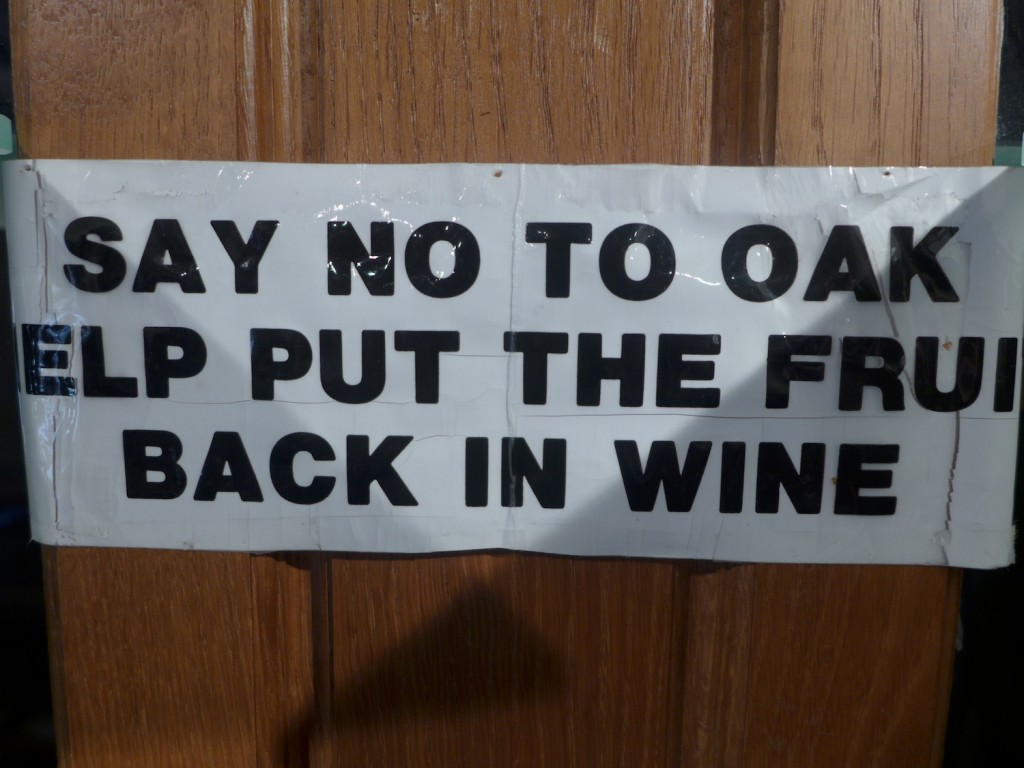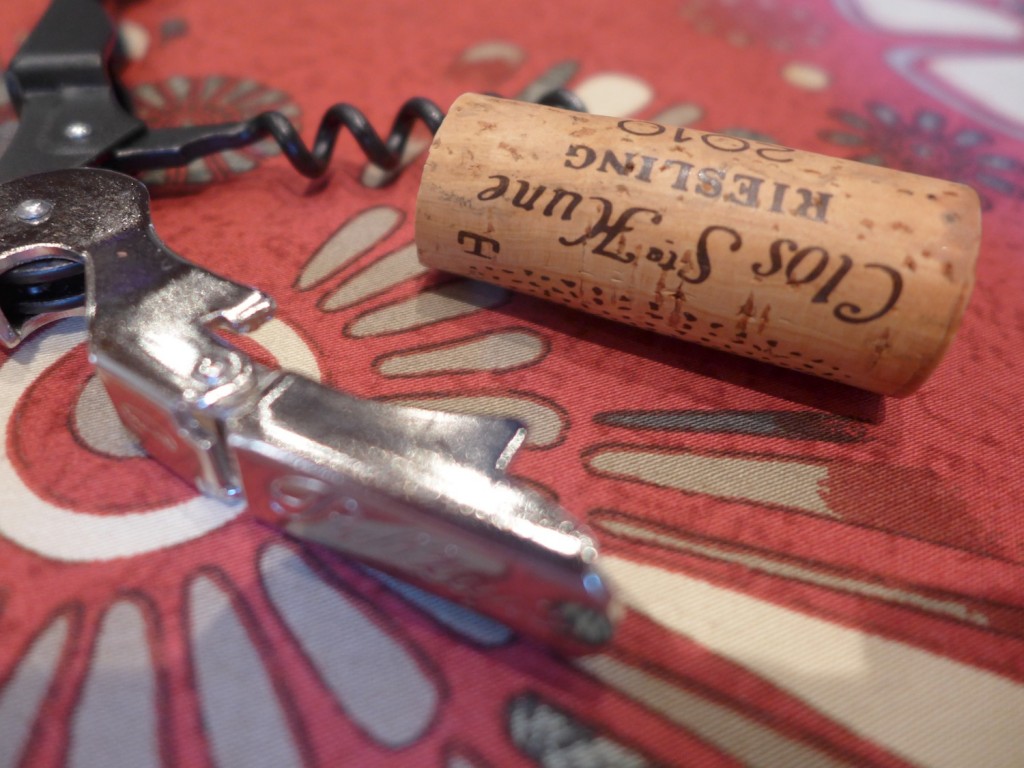 I found this funny sign – I’m in complete agreement with it, of course! – in the tasting room at Maison Trimbach in Ribeauville/Alsace where I had an amazing vertical tasting of Clos Ste. Hune and Cuvée Frédérik Emile dry Rieslings with Pierre Trimbach going back to the 2005 vintage, which I then extended to 2001 at the dinner table that night. The first vintage of Clos Ste. Hune was the 1919 and the effective first vintage of Cuvée Frédérik Emile was 1964, dates which seem to emphasis Alsace the continuity of dry Riesling production in the region.
I found this funny sign – I’m in complete agreement with it, of course! – in the tasting room at Maison Trimbach in Ribeauville/Alsace where I had an amazing vertical tasting of Clos Ste. Hune and Cuvée Frédérik Emile dry Rieslings with Pierre Trimbach going back to the 2005 vintage, which I then extended to 2001 at the dinner table that night. The first vintage of Clos Ste. Hune was the 1919 and the effective first vintage of Cuvée Frédérik Emile was 1964, dates which seem to emphasis Alsace the continuity of dry Riesling production in the region.
Since I returned from Alsace the story of this complex region has been going through my mind and I’ve been delving into the stats to see what they have to tell. The only major changes I expected to find was the virtual replacement of Sylvaner by Pinot Blanc & Auxerrois (usually bottled as a cuvée and marketed under the Pinot Blanc name) as the grape supplying the basic dry wine of the region, which the stats fully confirm. In 2009 Sylvaner accounted for just 3,573 acres / 1,446 hectares compared with 8,231 acres / 3,331 hectares for Pinot Blanc & Auxerrois. More surprising was the growth of Pinot Gris, partly due to fashion, but also as a result of the new clones (which crop more generously and reliably than the old ones) which began to be planted in the 1980s. And indeed that is the case. In 1982 there was just 1,360 acres / 550 hectares of Pinot Gris in Alsace, a figure which had hardly changed during the previous twenty years, but by 2009 this had risen to 5,822 acres / 2,356 hectares a leap from just under 5% of the entire vineyard area to around 15%. That says to me that the global Pinot Grigio (Italian name for this grape) phenomenon has also extended to Alsace.
This set me thinking about time frames, which are of vital importance in analyzing any statistics and have a relationship to them somewhat analogous to that for the context to the facts. For example, the fact that a particular stock has risen sharply today on Wall Street may be highly significant if it is part of a trend extending over many months, or virtually insignificant if during the same period that stock has been yo-yoing up and down by similar amounts. So I decided to look back much further than the stats from the 1982, the year of my first brief visit to the region. Then there were 5,560 acres / 2,250 hectares of Riesling planted in Alsace compared with 8,357 acres / 3,382 hectares today. That’s 50% growth, but over a period of 27 years or less than 2% per year, which is rather unspectacular. However, change the time frame and look back to 1958 and the radical nature of the change becomes apparent. Then there were just 1,945 acres / 787 hectares of Riesling in Alsace, which means that between 1958 and 1982 there was 185% growth, which is an average of 7.7% growth per year for 24 years; very serious growth. I would say that represents the change from Riesling being a notable speciality in the region to being a major grape variety (1958-1982), to then overtaking Gewürztraminer to become the clear number one grape variety in the region (1982-2009).
So the international success of Trimbach’s Clos Ste. Hune and Cuvée Frédérik Emile really did inspire the winegrowers of Alsace and as each wave of producers developed Riesling ambitions, so the stylistic diversity of Alsace Riesling expanded and expanded until it reached its current delightful and sometimes confusing complexity.


![120114_riesling_global_RZ [1600x1200]](http://www.stuartpigott.de/wp-content/uploads/2013/05/120114_riesling_global_RZ-1600x12003.jpg)